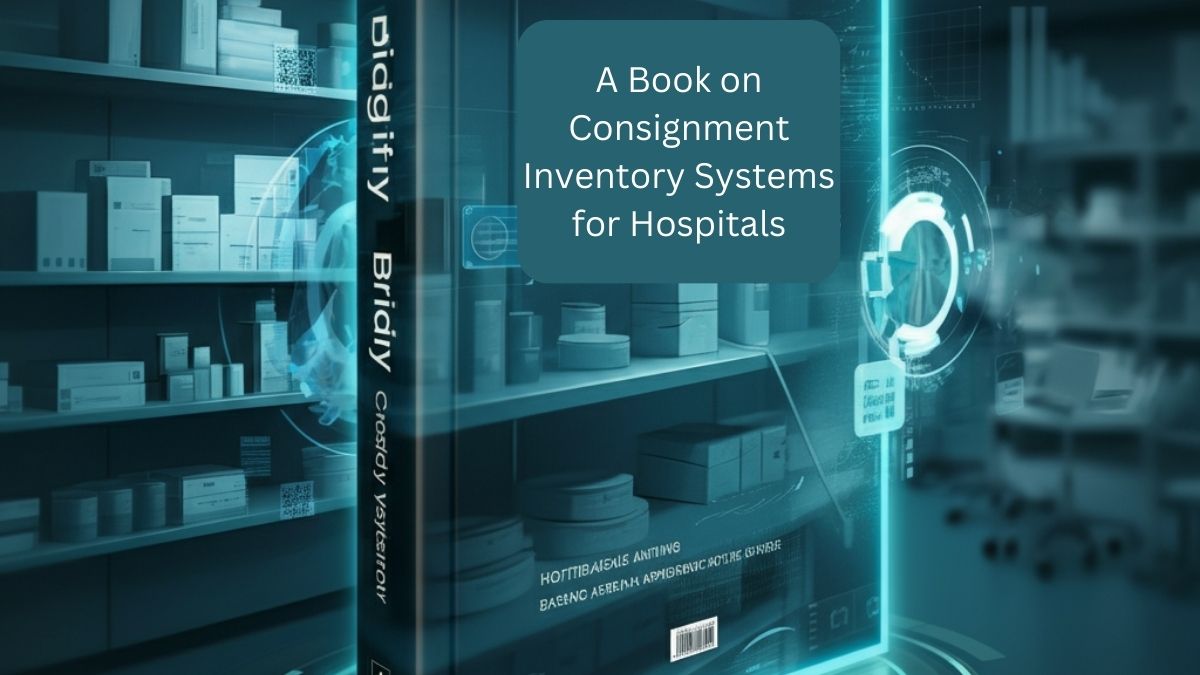Hospital inventory management is an essential function of healthcare operations. It ensures that the proper medical supplies, equipment, and medications are available when needed, enabling hospitals to deliver efficient patient care. Among the methods used to streamline this process, consignment inventory has emerged as a preferred model for managing medical supplies effectively.
This blog explores the hospital inventory system in-depth, focusing on consignment inventory. We’ll provide insights on the benefits, challenges, and best practices for hospitals adopting this innovative approach.
What is the Inventory System in a Hospital?
Hospital inventory management is the backbone of an efficient medical supply chain. It’s a systematic process that oversees the availability, storage, tracking, and utilization of medical supplies, equipment, and consumables in a healthcare facility. By maintaining adequate inventory levels, hospitals minimize disruptions in patient care due to stockouts or misplaced items.
Effective hospital inventory systems are vital for managing critical resources such as surgical tools, diagnostic equipment, medications, and personal protective equipment (PPE). These systems use barcoding, RFID tagging, and inventory management software to keep track of supplies, ensuring that inventory remains accurate and accessible at all times.
What is the Purpose of Medical Inventory?
Medical inventory serves one primary purpose – to ensure healthcare facilities always have the necessary supplies to deliver optimal patient care. But beyond that, inventory systems offer several other functionalities that help improve operational efficiency.
Here are some purposes of a pharmacy/medical inventory management system:
- Stock Tracking: Ensures all medicine, equipment, and consumables are accounted for and reduces the risk of discrepancies.
- Expiration Alerts: Automatically flags expired or close-to-expiry items, preventing their use and ensuring patient safety.
- Operational Productivity: Boosts productivity by reducing manual tracking and allowing multi-location inventory management.
- Cost Optimization: Lowers the risk of overstocking and understocking, which can lead to financial losses or missed opportunities to deliver timely care.
Streamlining inventory management is critical for emergency preparedness and maintaining compliance with healthcare regulations—factors that significantly impact a hospital’s overall efficiency.
What Are the Types of Inventory in Healthcare?
Four main types of inventory are commonly found in healthcare settings:
- Raw Materials include items used to create medical supplies, such as sterile packaging and essential chemical components for medications.
- Work-in-process (WIP) refers to items in the production stage that have not yet been completed, such as partially assembled surgical kits.
- Finished Goods: Finalized medical supplies or products ready for distribution, such as packaged medications, gloves, or syringes.
- Maintenance, Repair, and Overhaul (MRO): Items used to keep hospital spaces and equipment, such as HVAC filters or toner for medical imaging machines.
Understanding these categories is essential for maintaining control over hospital inventory. Each type requires unique tracking and management strategies tailored to its purpose.
What is the Consignment Inventory Method?
Consignment inventory offers a flexible and innovative model for managing healthcare supplies. Unlike traditional inventory management, the consignment method allows hospitals to stock inventory provided by suppliers (consignors) without purchasing the goods upfront. Payment is made only when the items are used or sold.
This arrangement shifts the financial risk from hospitals to suppliers. For resource-intensive environments like healthcare, the consignment inventory method improves cash flow while ensuring critical supplies are always available.
Key features of consignment inventory include:
- Supplier Responsibility: The supplier retains ownership of the inventory until it is consumed or sold.
- Reduced Upfront Costs: Hospitals do not pay for supplies until they are utilized, freeing up financial resources for other priorities.
- Tracking Systems: Advanced systems track inventory usage to ensure the hospital and supplier have clear visibility of stock levels.
What is Consignment in Healthcare?
Consignment inventory in healthcare is a supply chain model designed to improve efficiency in operating rooms, pharmacies, and other departments. Manufacturers or suppliers deliver medical equipment, tools, or supplies to hospitals and retain ownership of the products until used.
This system is handy for high-value or unique items like surgical implants or custom medical devices. It ensures that hospitals always have access to these critical supplies without bearing the cost of whole ownership upfront.
Key Applications of Consignment in Healthcare:
- Surgical Implants: Items like orthopaedic implants, joint replacements, and cardio devices are often managed through consignment.
- Operating Room Supplies: High-cost equipment used in surgeries, such as specialized instruments, are retained on a consignment basis.
- Pharmaceuticals: Some pharmacies within hospitals use consignment inventory for rare medications that have irregular demand.
Challenges of Consignment Inventory
While the consignment model offers many benefits, it has challenges. Hospitals looking to adopt this system must be aware of potential hurdles in implementation and management.
1. Cash Flow Management
Although hospitals don’t pay upfront, they are still liable for payments upon usage. Delays in reimbursement from insurers or slow-moving inventory can cause cash flow disruptions.
2. Inventory Tracking Complexity
Tracking consignment inventory requires efficient systems to monitor stock levels, usage, and replenishment. Without accurate software, discrepancies between hospital and supplier records can arise.
3. Supplier Dependence
Because suppliers own the inventory, hospitals must rely on their accuracy and timeliness in refilling stock. Any delays on the supplier’s end can negatively impact patient care.
4. Data Privacy Concerns
Inventory tracking often integrates with hospital management software, which may involve sharing data with suppliers. Ensuring compliance with healthcare data privacy regulations is crucial.
By addressing these challenges proactively, hospitals can maximize the benefits of consignment inventory while minimizing potential drawbacks.
Why a Book on Consignment Inventory Systems for Hospitals is Vital
Understanding and implementing a consignment inventory system in healthcare can be complex. A comprehensive resource like A Book on Consignment Inventory System for Hospitals can bridge the knowledge gap, providing an invaluable guide for administrators, inventory managers, and healthcare leaders.
This book provides:
- An in-depth explanation of hospital inventory systems and their purpose.
- Step-by-step guidance on adopting the consignment inventory method.
- Insights into overcoming everyday challenges with actionable solutions.
- Practical case studies showcasing successful integrations in healthcare.
Whether considering consignment for the first time or optimizing your existing model, this resource will ensure you’re well-equipped to bring efficiency and agility to your inventory management practices.
Elevating Hospital Inventory Management with Consignment Solutions
Consignment inventory systems are revolutionizing how hospitals manage medical supplies. This model delivers efficiency and greater financial flexibility by reducing upfront costs and ensuring the availability of critical items. However, its implementation requires a clear understanding of the system’s dynamics, challenges, and operational best practices.
To dive deeper, consult A Book on Consignment Inventory System for Hospitals. It’s time to optimize your hospital’s inventory and advance patient care delivery.

